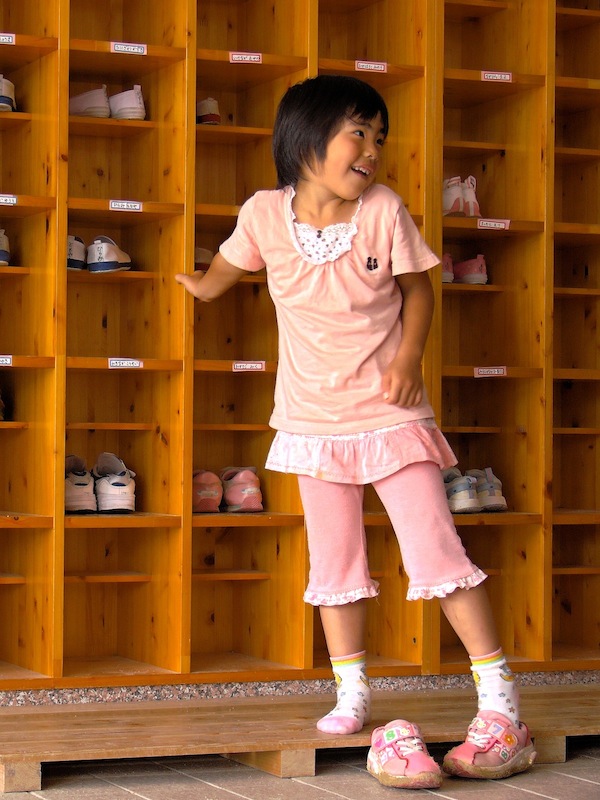The Nation at Their Feet
 Friday, January 4, 2013 at 12:58PM
Friday, January 4, 2013 at 12:58PM
 "Some grade school kids these days don't know how to tie their shoes," Shizuko, a woman in her late seventies, grouses.
"Some grade school kids these days don't know how to tie their shoes," Shizuko, a woman in her late seventies, grouses.
I love it when the older members of the class get self-righteous: it gives me the perfect opportunity to playfully goad them: "Well, considering all the shoes with Velcro today,” I say, “I'm not surprised. But then, what about yourself, Shizuko? Could you . . . ? Sorry to ask a stupid question, but did you even wear shoes when you were young?"
A number of them, including Shizuko, giggle, which I take as a no.
Another woman, this one in her early eighties, tells me about the shoes she used to wear, how they didn't have laces. She draws me a picture of a simple rubber and canvass slip-on. Several of them concur: they wore the very same kind of shoe.
A woman in her fifties says that parents today have to prepare three or four pairs of shoes for their children: the shoes they wear to school, the shoes they wear in the school facilities, the locker room slippers, and so on.
I ask what to me seems to be the most reasonable question to ask, "Why?"
"Why what?"
"Why do you think the kids have to prepare so many different shoes for school?
"I don't know," she replies.
As expected, no one does. And why would they? Like the well-trained Japanese that they are, they probably never gave it a second thought until day even though four pairs of shoes for a kid who'll outgrow them in no time is quite a lot.
"Did it ever occur to you,” I say, “that the reason your kids have to prepare four pairs of shoes is because the owner of a major shoe manufacturer and a high-ranking official in the Ministry of Education have been good friends since the time they were classmates at Tôkyô University?"
I'm only half serious, but considering the way so very little is left to chance in this country, it would seem awfully peculiar if such rules had been made arbitrarily.
Case in point: Taspo[1].
While the stated aim for the introduction of the “Tobacco Passport” was to reduce the smoking of cigarettes by minors,[2] the tacit goal was to change the purchasing habits of smokers, moving them away from the vending machines and into convenience stores where the Taspo card is not necessary. The big winners of the legislation were convenience stores such as Lawson and 7-Eleven which had lobbied hard for its passage. The losers: independent mom-and-pop shops which often have cigarette vending machines out front.
Similarly, a law was passed a few years back re-designating certain drugs such that they could no longer be bought over the counter unless done so by a licensed pharmacist. This rule was pushed by the major drug store chains such as Matsumoto Kiyoshi and Drug Eleven to further put the squeeze on small-time pharmacies.
[1] Taspo (タスポ), formerly known as Tobacco Card (たばこカード tabako kādo), is a smart card using RFID developed by the Tobacco Institute of Japan (TIOJ), the nationwide association of tobacco retailers (全国タバコ販売協同組合連合会 Zenkoku Tabako Hanbai Kyōdō Kumiai Rengōkai), and the Japan Vending Machine Manufacturers Association (日本自動販売機工業会 Nihon Jidōhanbaiki Kōgyōkai) for introduction in 2008. Following its introduction, the card is necessary in order to purchase cigarettes from vending machines in Japan. The name "Taspo" is a portmanteau for "tobacco passport" (たばこのパスポート tabako no pasupōto). For more, see Wikipedia.
[2] In Japan, you have to be 20 to drink alcohol or smoke cigarettes. This doesn’t really stop minors from doing either.
Reader Comments